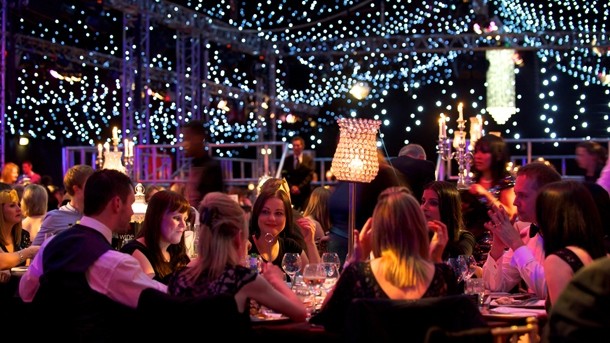ASK THE EXPERTS
How to move into event catering

As chefs look to expand their business empires, the lure of the corporate market can become greater. After all, there are only a certain number of restaurants they can afford to open and operate within a certain period.
One way to expand the business and their reach is to enter into the world of special events catering.
The chef doesn’t have to set up a new catering operation; they can align themselves with an established caterer and leave them to handle the mechanics of the business. Caterers themselves are looking at different ways in which they can diversify their offering and appeal to new markets, so having a Michelin-starred chef within their stable gives them something different. It can be a win-win situation.
There are, however, a few guiding principles which any chef considering this move should remember.
Choose the right company to work with
First and foremost, it is vital for a chef to align themselves with an established caterer whose clients you want to create food for. Do your research into how a caterer operates, its clients and menu price points to ensure you are entering into a contract with the right caterer who understands what you want to achieve.
For example, if you operate a Michelin-starred restaurant, you will want to reach people who are interested in eating food of Michelin-starred calibre. Not all caterers will have access to the audience you want to reach, so it’s important to do some initial research into an individual caterer's operation, service, clients and also price points across their menus first.
There is no point a high profile chef approaching a mid-range caterer which is currently charging between £45-£60 per head; when the quality of ingredients, kitchen preparation time, skills and number of chefs and service staff required on site to deliver the enhanced menus, will nudge the price over £150 per head. From a chef’s perspective it limits their creative freedom and devalues their brand; from a catering perspective, it forces an exponential price jump which risks alienating their market.
Be prepared to compromise
Catering for large numbers (500+) is not something that can merely be bolted onto a chef’s other operation and be expected to work – the rules that govern restaurant service are different from venue/off-site catering. Symbiosis, empathy and a shared philosophy between chef and caterer is essential.
As such, the relationship between consultant chef and the caterer’s head chef is important. Both need to work closely to ensure the success of the venture. Essentially it’s a two-way process – the chef will come up with a menu similar to one which is delivered in their restaurant, the caterer will then work to make it scalable. This means there needs to be a mutual understanding of limitations. An experienced caterer will be well positioned to know the restrictions across various sites and venues, advising the consultant chef accordingly.
For example: ‘tonight we are working in a listed building so no fryers can be used or brightly coloured food served’ – the menu will be adapted by the caterer in conjunction with the consultant chef to meet these requirements. Yes it’s a mutual compromise, but one which can lead to great results.
Be aware of scale
One very important factor to remember is that this is not a restaurant. Running the pass as if serving a table of six as opposed to 600 will have a detrimental effect on service.
Chefs need to be aware of the different requirements and challenges associated with event catering. It is a discipline all of its own. People expect their food to arrive at roughly the same time, whether the event is for 10 or 1,000 people, so there will be major delays in service will occur when trying to run a corporate event like a restaurant. This results in disgruntled guests with tepid food and a very unhappy client, subsequently jeopardising the contract and making both chef and caterer look unprofessional.
In addition to an acknowledgement of service requirements, chefs should go into any partnership with caterers with awareness that some of their dishes are extremely difficult to deliver for large numbers. Chefs need to take the advice of their catering partner to develop a solution. If, for instance, asparagus risotto turns out to be an over-ambitious choice for 1,000 people, the caterer should be able to offer the chef an alternative suggestion as close to the original dish as possible.
Commitment is key
Finally, and this is a short one, the chef needs to devote time and energy to the project, or the whole operation will fall apart. If he/she is too preoccupied with global restaurant openings, book launches and television spots yet never on-site for corporate catering operations, then it’s not going to help sell the service. They cannot merely pay lip-service to the idea; they have to be involved at every step of the process to make it work.















